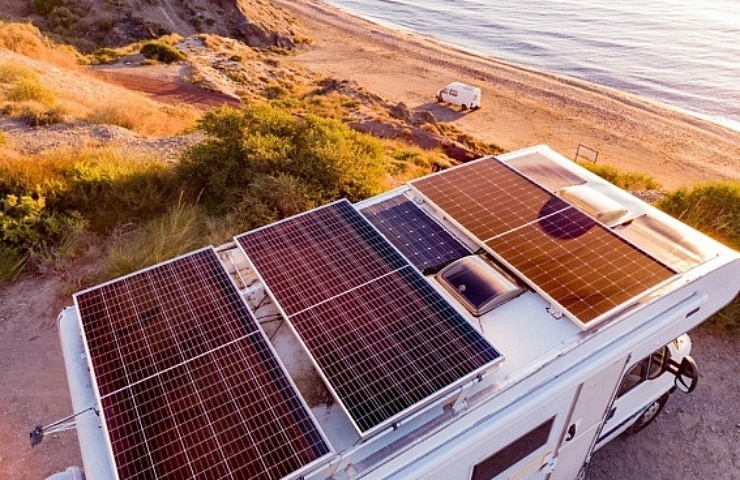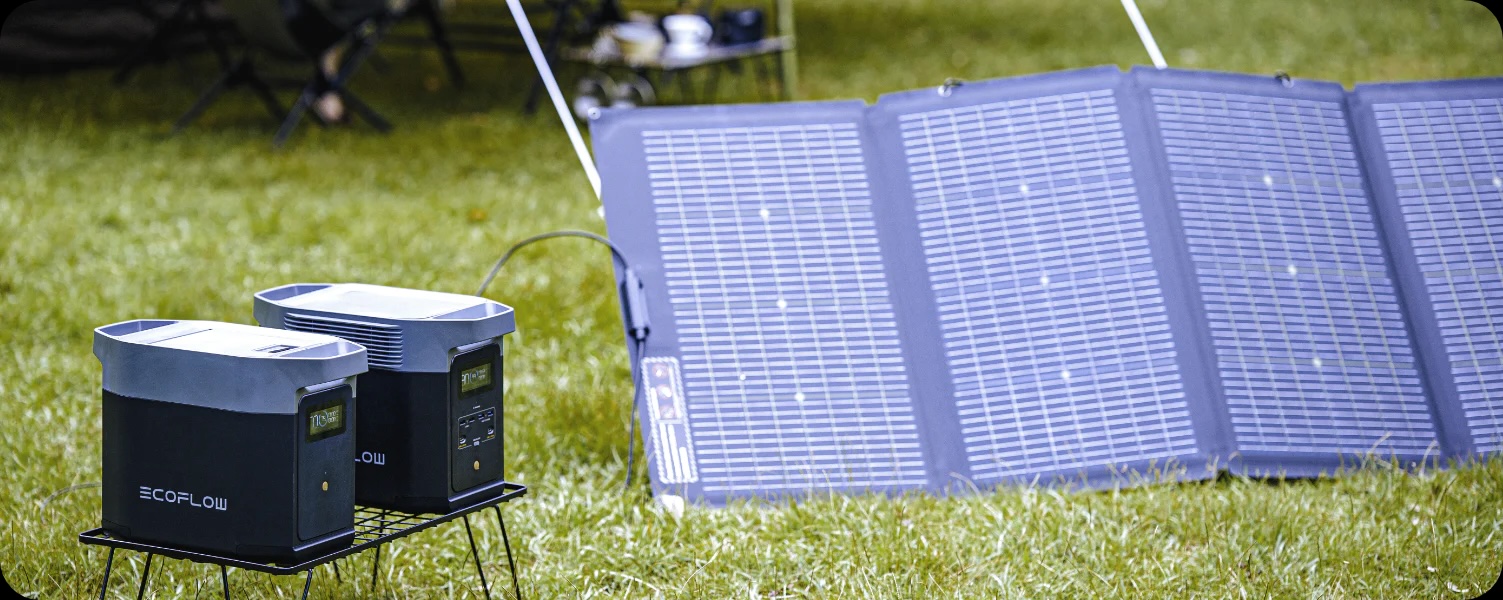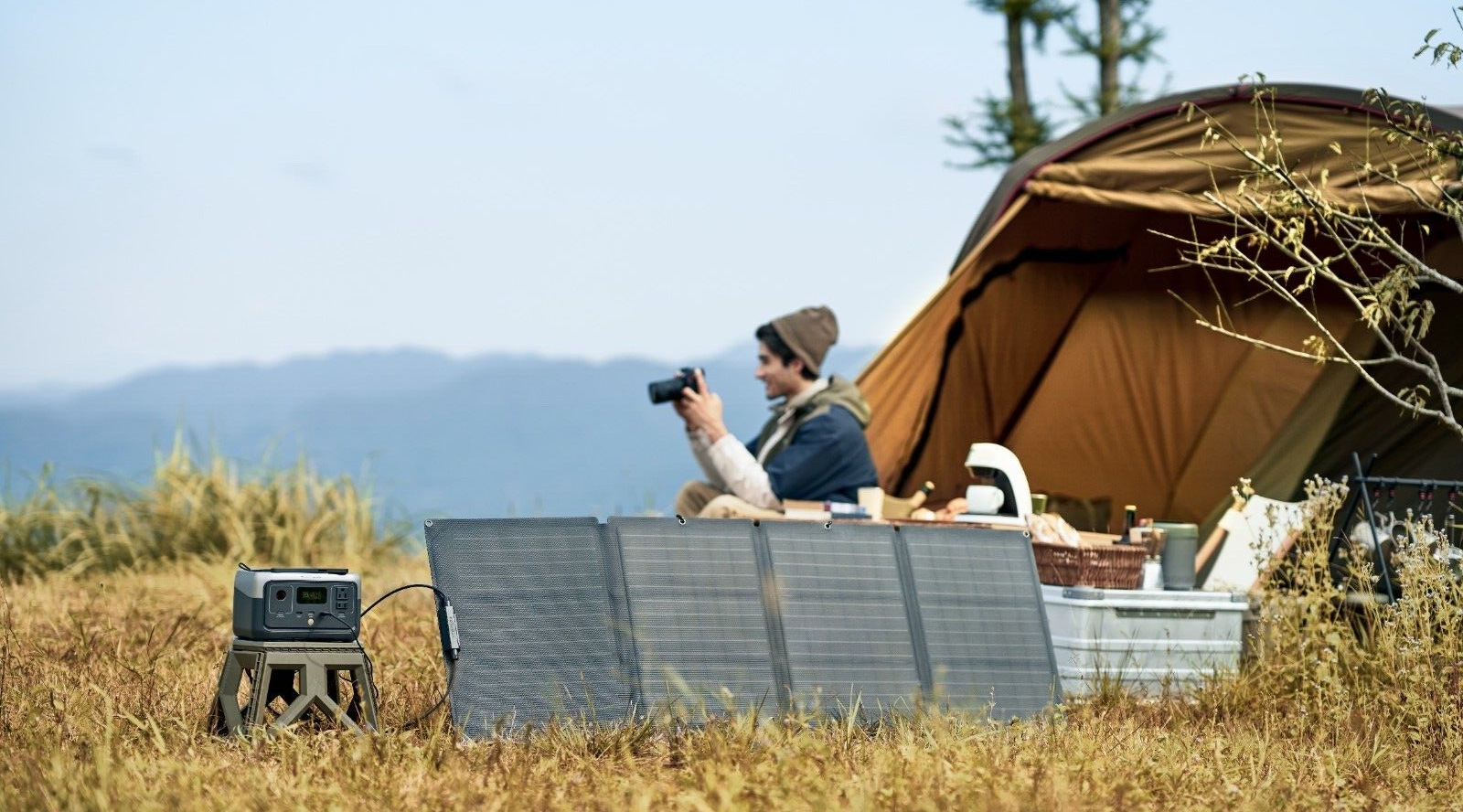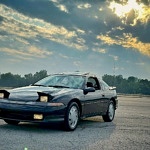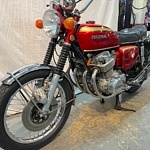Contents
Overlanding is more than a fad. It is a chance to camp out, relying on your vehicle for minimalist lodging. Frequently, rustic campsites lack water, sewer, or electrical hookups. It might be optimal to “get away from it all,” but reality strikes, and you still need access to power. No matter how far you go down the road less traveled, you can’t escape the need to power modern devices.
Fortunately, many vendors on eBay offer compelling options for generating electricity in the boonies. The portable generator market is undergoing radical change. Here’s a quick guide to finding the best power-generating solution for your next off-the-grid road trip.
Shop now for generatorsPower Needs
Finding the best solution starts with sizing up your needs. Here are the wattage requirements for devices you might want in your overland rig:
- Smartphone charger – 20 watts
- LED camping lamp – 30 watts
- Laptop – 50 watts
- RV refrigerator – 180 watts
- Coffeemaker- 600 watts
You could power all these simultaneously with about 1,200 watts (or 1.2 kW). Know that generators are rated for their running (not peak) wattage. Most overlanding camping sites can make do with a generator offering 2,000 watts of continuous power.
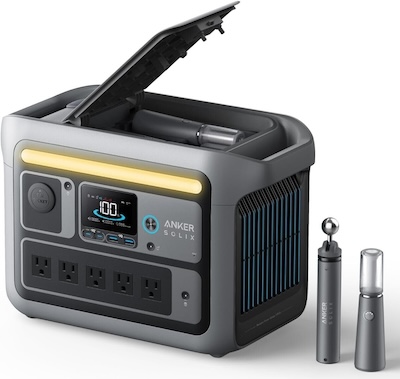
The Anker Solix C800 is rated at 1200W with a 1600W peak.
Also, we recommend a generator with an inverter or regulator to ensure that power surges don’t harm your delicate devices. The additional cost is minimal, but many contractor-style generators don’t offer this protection.
Many generators come with the standard 110-volt outlet/s, plus USB ports for your small electronics. For example, the Anker SOLIX C800 provides 1200 watts of power with five AC plugs, one car power outlet, two USB-A, and two USB-C ports.
Choosing a Generator
Consider these factors when shopping for a remote power source.
Fuel type – Most generators use either gasoline or propane. Of course, you’ll need to carry these fuels along for the ride. It’s unsafe to store gasoline inside a vehicle, and most states limit the size of spare gas containers. New York, for example, limits containers to five gallons. Most gas generators use nearly a gallon an hour. So, pay attention to tank capacity when comparing models.
You can avoid hauling fuel with solar, but smaller photovoltaic systems lack sufficient battery storage for sustained use of high-wattage appliances.
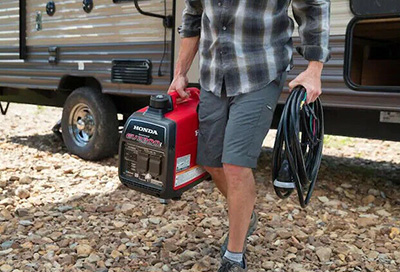
The Honda Super Quiet EU2200I 2200w portable inverter generator promises quieter operation.
Size – If you want to power a lot of stuff, you’ll need a larger generator. A 2,000-watt generator is slightly bigger than a microwave and weighs about 50 pounds. Limiting your energy needs is better than taking up more space with a heavier, bulkier generator. Many generators have wheels to allow for easier transport.
Noise – Nothing destroys the peaceful feeling of being in nature than the drone of a gas-powered generator—especially when running at night. So, it’s critical to consider your tolerance for long stretches of noise from your generator. Some units promise quieter operation, or you can escape the racket (and exhaust fumes) by choosing solar power.
Extra options – Many experienced campers have small DC-powered devices—from fans to coffee pots—designed to run off a car’s battery. An excellent option many generators offer is the ability to output AC (alternating current) and DC (direct current). Some include a light to illuminate the workspace around the generator.
Battery storage – Fossil-fuel generators may include a powerful battery to provide additional power when the generator is not in use. Any excess power not needed when running the generator feeds into the battery. This is a great feature, especially at night when you might need some juice but want to avoid the noise.
Shop now for quiet generatorsFossil Fuel Versus Solar
Once you’ve determined the amount of power needed, you need to decide on the type of fuel you want to burn (or not, as the case may be). Dual-fuel generators run on both propane and gasoline. Diesel generators are at the other end of the fossil fuel spectrum. They are rugged and capable but noisy and usually reserved for industrial uses. While solar generators seemed like science fiction a decade ago, they’re capturing an increasing market share.
Combustion Power
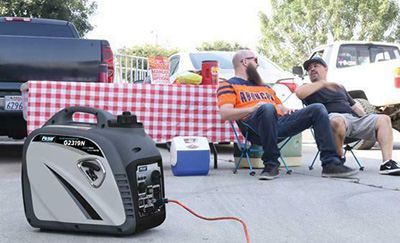
The Pulsar PG2000IS puts out 1,800 running watts.
Gasoline-powered portable generators are the traditional sweet spot. They are compact, offer reliable power, and can be refilled at the gas station. Check the tank size to learn how long it can run continuously and how often it needs filling.
There are drawbacks:
- Gas generators typically start having performance issues above 4,000 feet in elevation.
- A gas-powered generator emits toxic and potentially deadly fumes. Never run a generator in an enclosed space or near your sleeping quarters.
- Gasoline can go stale and clog internal parts. After your adventure, empty the generator’s tank and buy fresh fuel before your next road trip.
Solar Power
Solar arrays aren’t generators in the most technical sense, but they serve the same purpose—creating power and storing it in batteries for later use. Once you own a portable solar-generating system, you can enjoy an endless supply of electricity. It’s a quiet, affordable way to keep lights, laptops, and other electrical items running off-road.
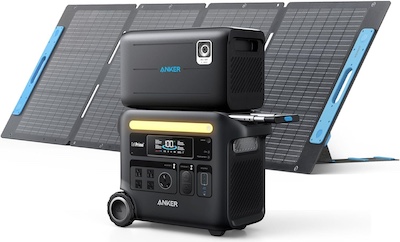
The Anker SOLIX F2600 Portable Power Station bundle includes an expansion battery and a 200W Solar Panel.
A complete solar-powered system has three parts: a collector, inverter, and battery. The inverter is critical. It converts energy stored in batteries into a stable current for use by AC devices.
You can place a solar array on the roof of your camping rig or anywhere that gets sun. You might need to rotate the unit to follow the sun’s movement.
Sellers of photovoltaic systems usually list their DC charge rate to indicate how long it takes for the solar array to recharge the battery fully.
How do you determine the optimal size for a portable generator? Here’s how to make a quick calculation.
- Add up the wattage of your appliances and how long you plan to use them.
- The tally provides a total in watt-hours. (A 100-watt appliance running for one hour would use 100 watt-hours.)
- Figure that you will get an average of six hours of direct sunlight.
- Divide the watt-hours by six to determine the wattage your solar array should produce. (Many campers can get by with a 100-watt system.)
As technology advances, the cost of a solar system continues to drop. But there’s no reason to wait. A capable and affordable photovoltaic portable generator can already serve most or all the needs of overlanders parked in a remote, off-the-grid location. Most vendors offer the option of expanding the number of solar panels or their wattage to accommodate your expanding power needs.
For short trips, consider portable battery-based power generators that store enough juice for two or three days.
Factory-authorized solar generator eBay stores include:
Shop now for solar generators
